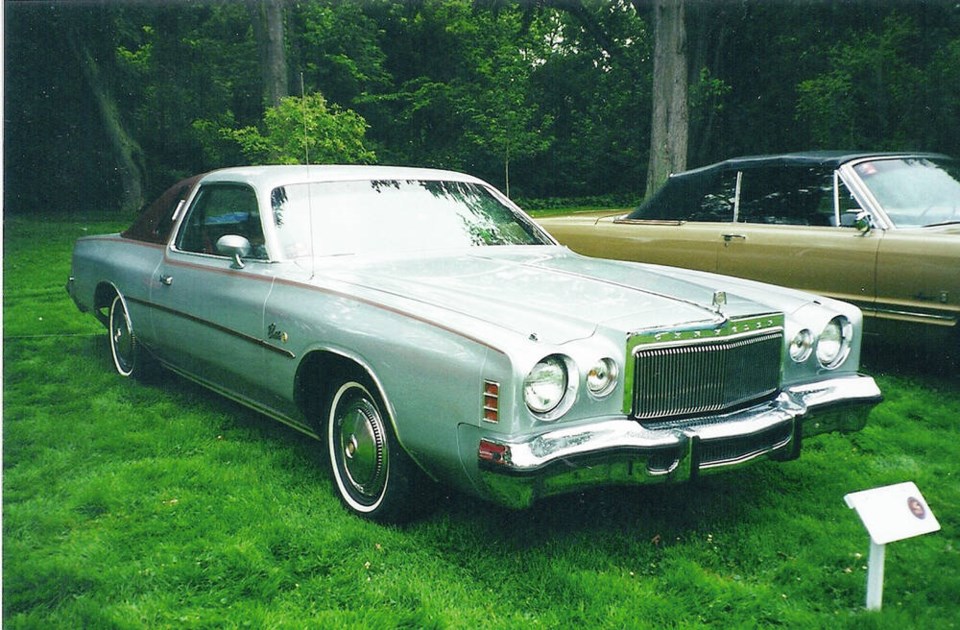The 1970s were difficult for the North American auto industry. Not only was there intensifying competition from imported cars, there were also two oil crises and increasingly tightening standards for fuel economy and emissions. All of these were placing increasing strain on the industry’s engineering capabilities.
The Chrysler Corporation was particularly hard hit, caught as it was with a stable of newly designed big cars when the first oil crisis hit in 1973, an event that suddenly turned the market around to one that demanded smaller, more fuel efficient models.
This and other problems would bring the once mighty corporation to its knees by the end of the decade, forcing its newly hired president Lee Iacocca to go hat in hand to the government begging for loan guarantees.
There was, however, one bright spot in all this corporate gloom: the Chrysler Cordoba. There was also Chrysler’s Dodge Charger SE Cordoba clone, but the Cordoba made the larger impact.
The Cordoba was what became known as a “personal luxury coupe,” an up-scale, mid-size, two-door hardtop with the classic long-hood, short-cabin configuration. It was a category inspired by the successful smaller 1969 Pontiac Grand Prix and 1970 Chevrolet Monte Carlo. Chrysler based the Cordoba on its 2,921 mm (115 in.) wheelbase B-body intermediate platform.
The resulting Cordoba, although far from small at 5,461 mm (215 in.) long, was still shorter than other Chryslers by about 305 mm (12 in.). And at 2,077 kg (4,580 lb) it was no lightweight either.
All of this heft required a big engine and the Cordoba had a choice of three: the standard 5.9 litre (360 cu in.) overhead valve V-8, and optional 5.2 litre (318) and 6.5 litre (400) V-8s. The only transmission was Chrysler’s well regarded three-speed TorqueFlite automatic. It had Chrysler’ front torsion bar suspension and standard radial tires.
The 195 horsepower 6.5 litre (400 cu in.) V-8 would, according to Car and Driver (8/76) sprint the Cordoba to 97 km/h (60 mph) in 9.3 seconds and push it to a stop speed of 172 km/h (106 mph).
A sign of the frugal times was an acceleration warning light in the left front fender-mounted turn signal indicator. If the accelerator was tramped too vigorously the manifold vacuum-activated “Fuel Pacer” light glowed reprovingly at the driver.
While the performance was hardly road ripping, the Cordoba was less about speed than it was about sybaritic luxury and styling panache. Its body was nicely sculpted with a hint of a razor edge motif atop the front fenders. A tasteful rectangular grille was flanked by round parking lights and single round headlamps. Buyers could specify a full vinyl roof or the “Landau” version with vinyl on the rear half only.
Inside could be found deep pile carpeting, attractive brocade and velour upholstery, optional leather and simulated wood trim. As the Cordoba was meant to conjure up images of glamorous locales, it was adorned with round, gold coloured medallions intended to evoke image of the ancient Spanish doubloon.
To further reinforce the exotic impression, Chrysler employed actor Ricardo Montalban to do Cordoba television commercials. The always elegantly turned out Mr. Montalban extolled the virtues of the Cordoba’s luxury, including the optional “fine Corinthian leather,” a phrase that came to define the Cordoba.
The Cordoba did the job it was intended to do. It breathed new life into the Chrysler marque, and in its first year, 1975, its sales of over 150,000 were more than the entire 1974 Chrysler line.
Chrysler left the Cordoba largely as it was for 1976 and it continued to sell well. Then for 1977 stylists got a little carried away with its roof treatments. There were both full and Landau vinyl roofs, tiny opera lights, and to cap it all off, a thin band of light extending across the top of the car. For those seeking open air motoring a T-roof option was available.
No matter how quaint these items may appear now, they worked for Chrysler; 1977 sales of more than 180,00 gave the Cordoba its best year ever.
But Chrysler was still in trouble and the best it could do for the 1978 Cordoba was stacked quad headlamps and a cross-hatch grilled that gave the front end a heavy, inelegant look. At the rear, the flat taillights lacked the style of the previous ones.
In a quest for economy, the ‘78 Cordoba got Chrysler’s electronic “Lean Burn” ignition and a lock-up torque converter.
But the automotive world was changing rapidly and the Cordoba’s time was passing. In spite of an attempt to revive the legendary 300 name for 1979, the public wasn’t fooled. Although down-sized for 1980, the future lay in smaller more economical front-wheel drive cars. Cordoba sales tapered off and it left the scene in 1983.



